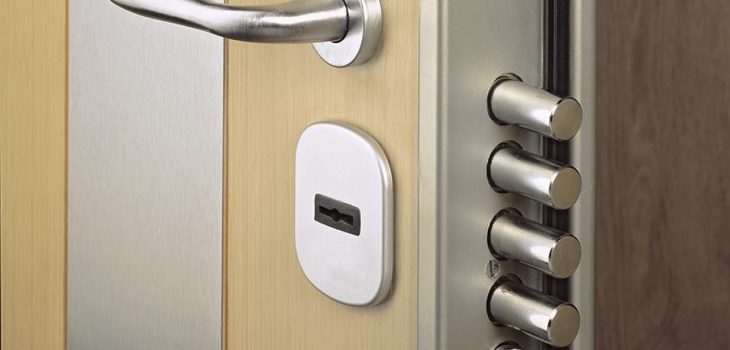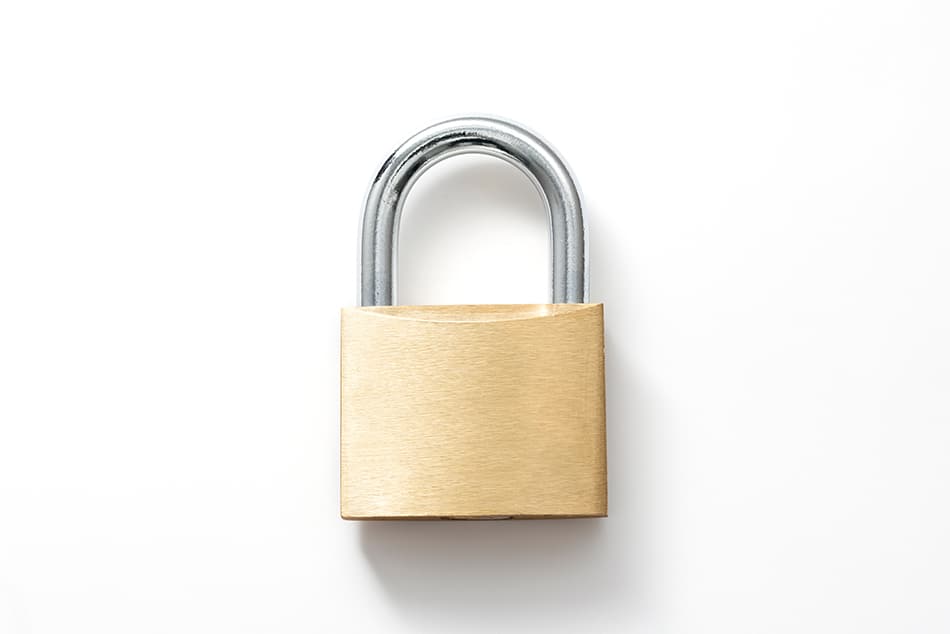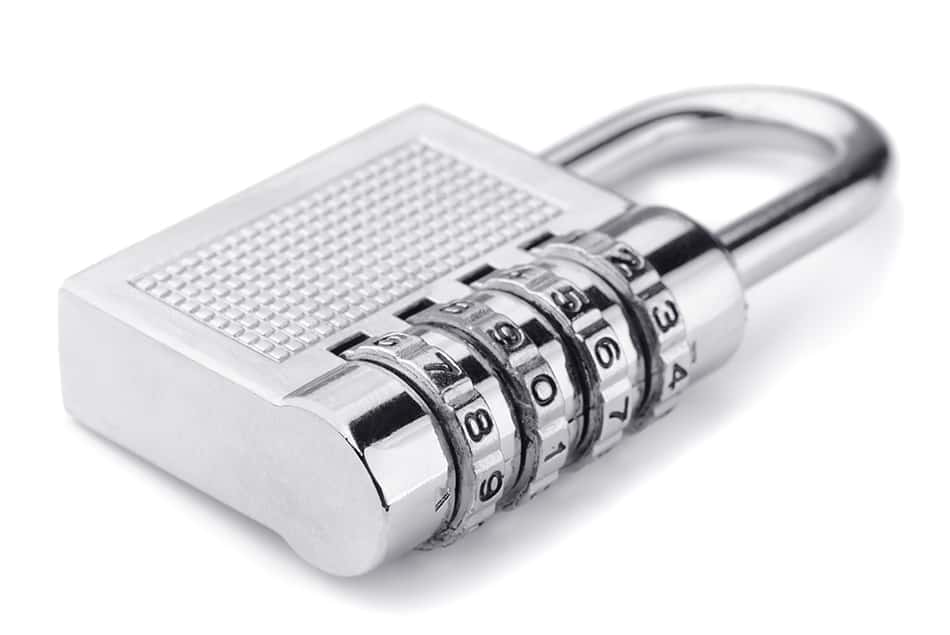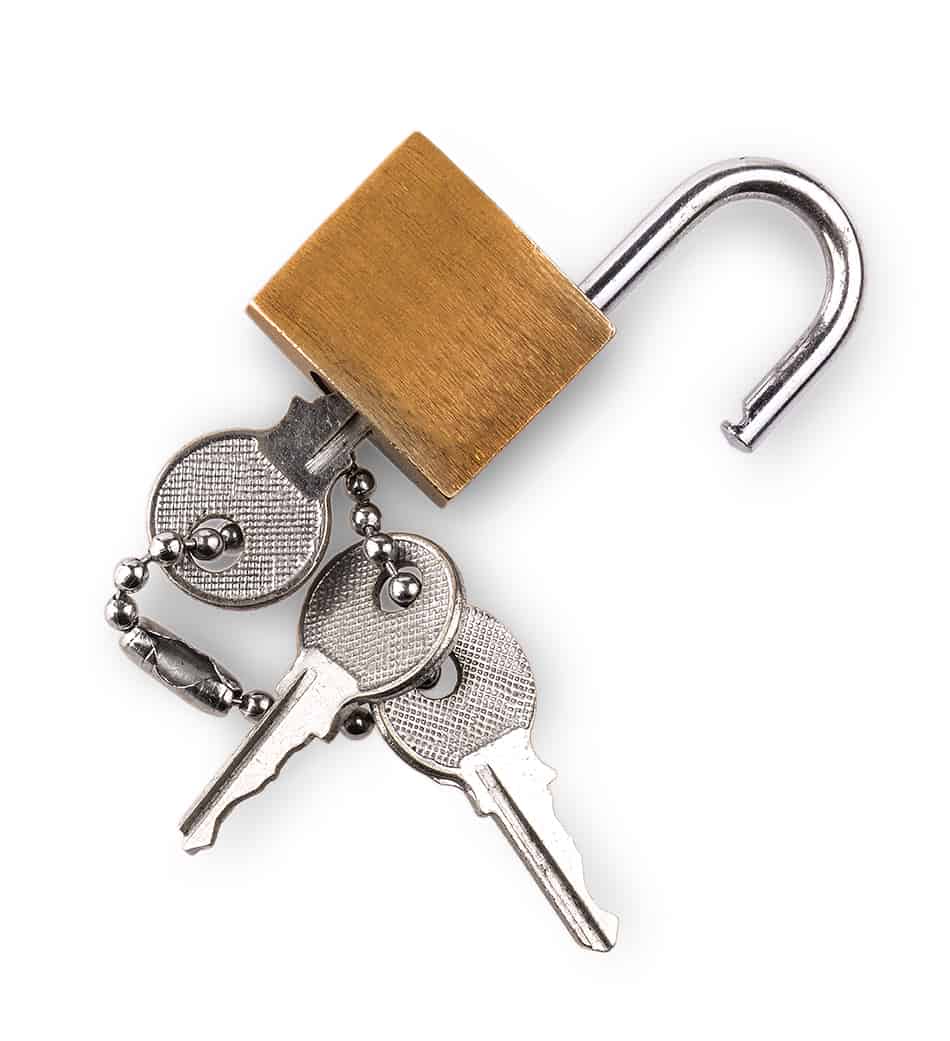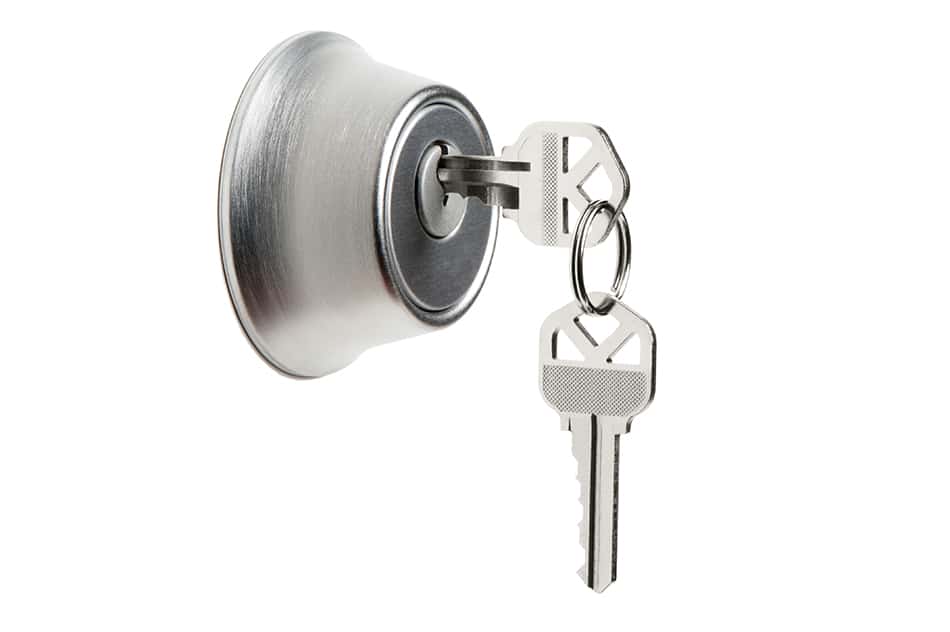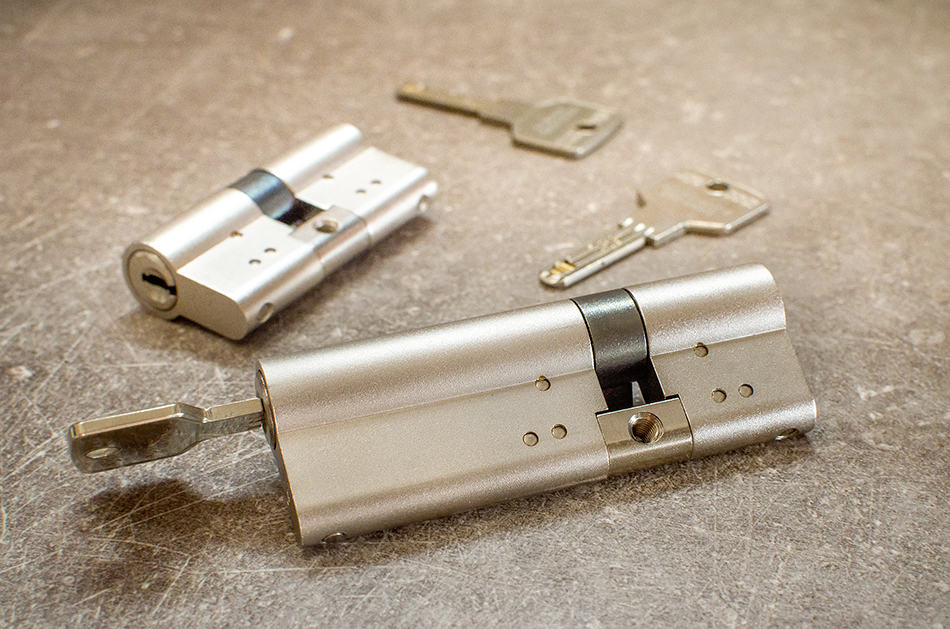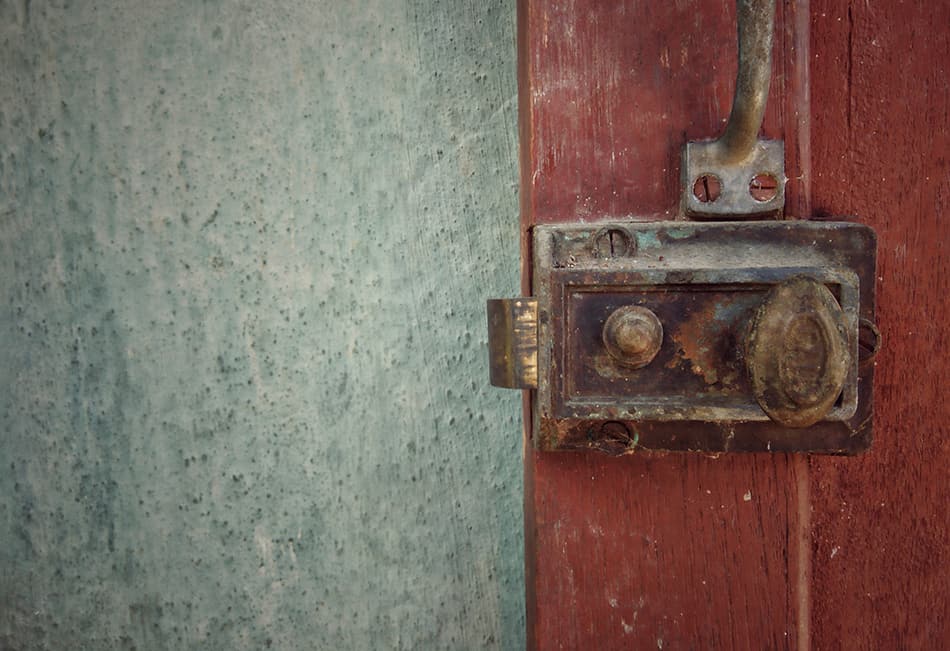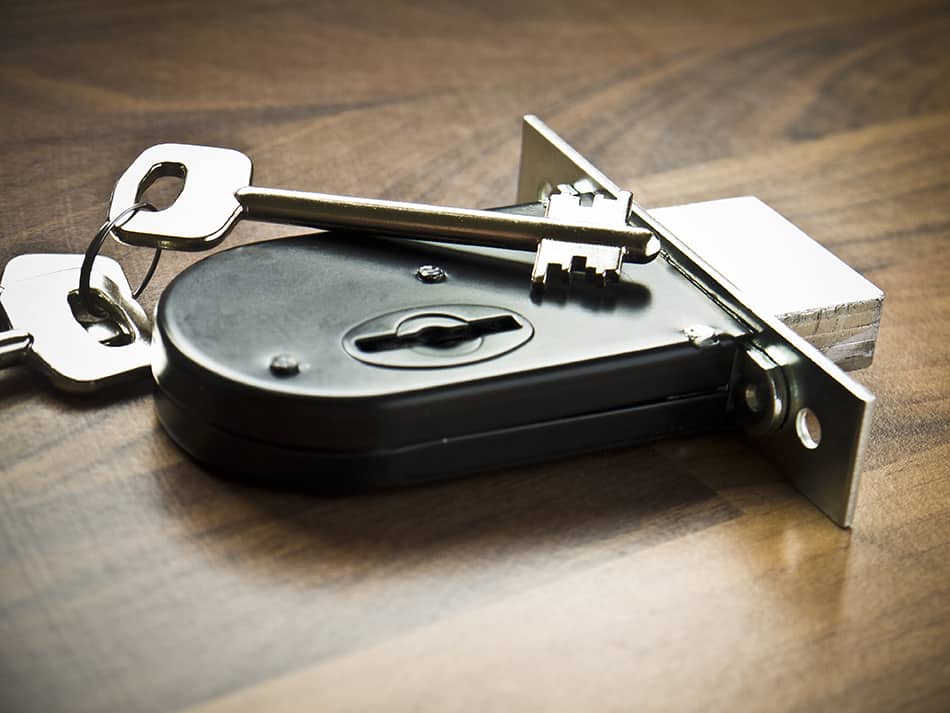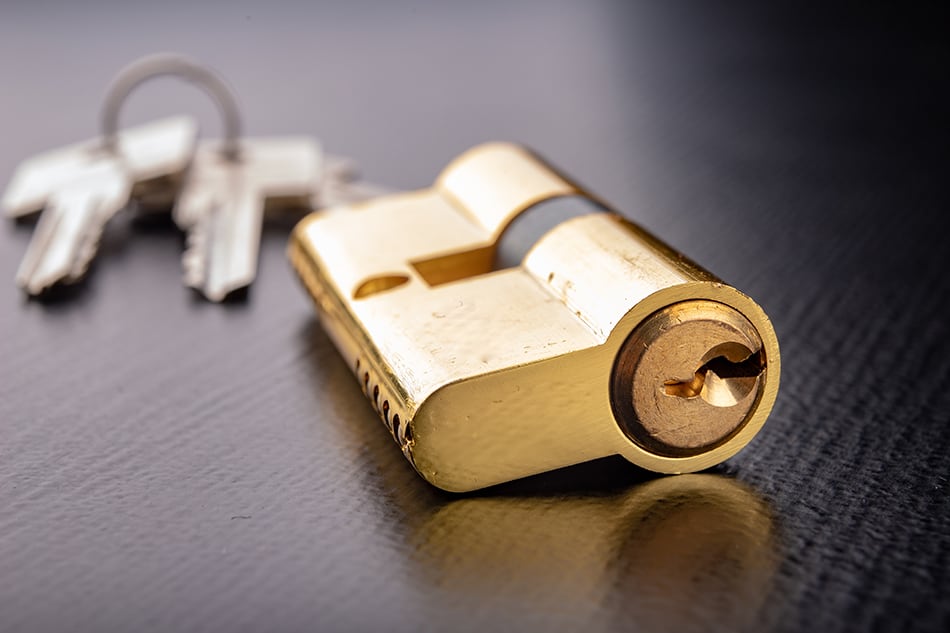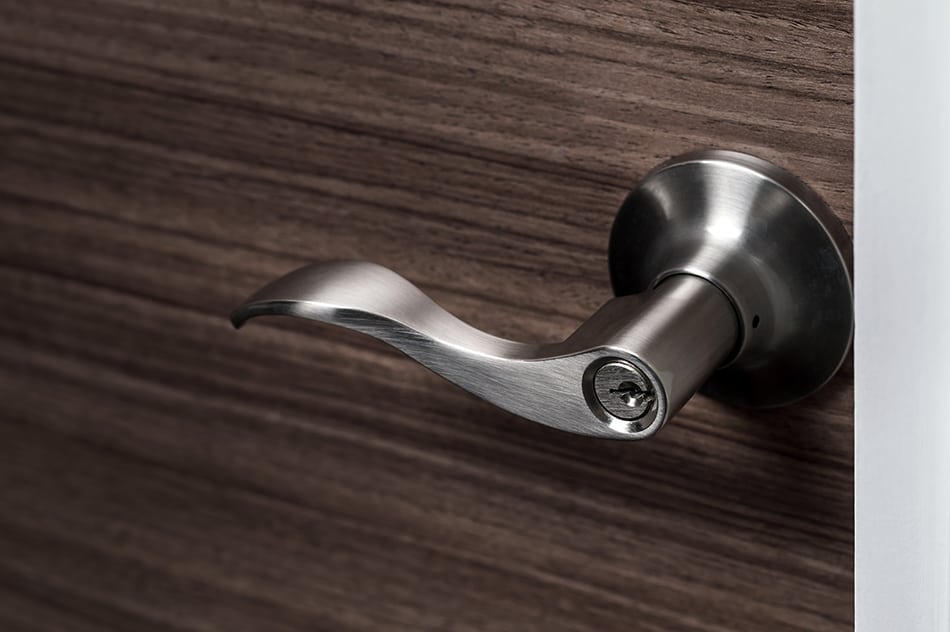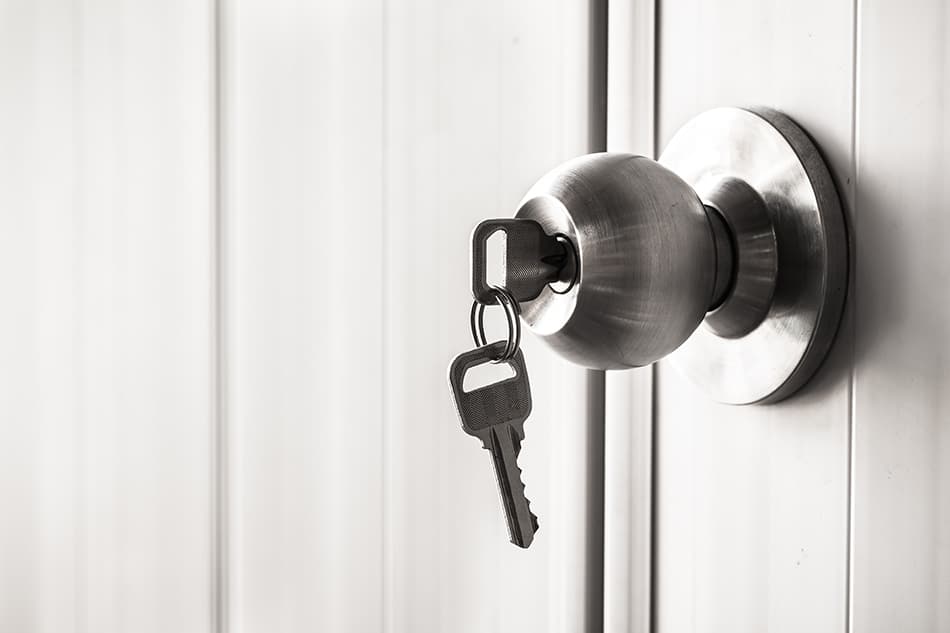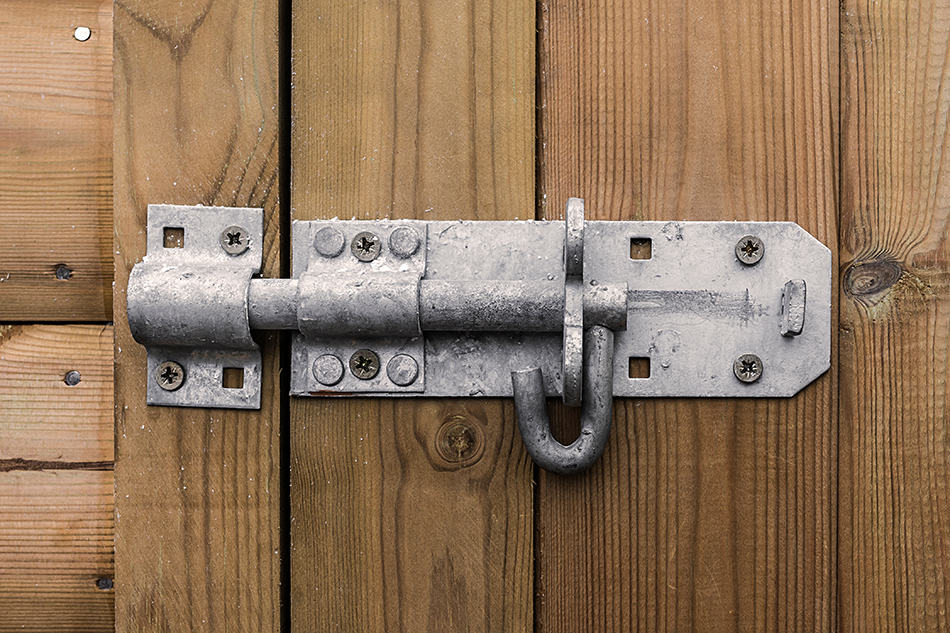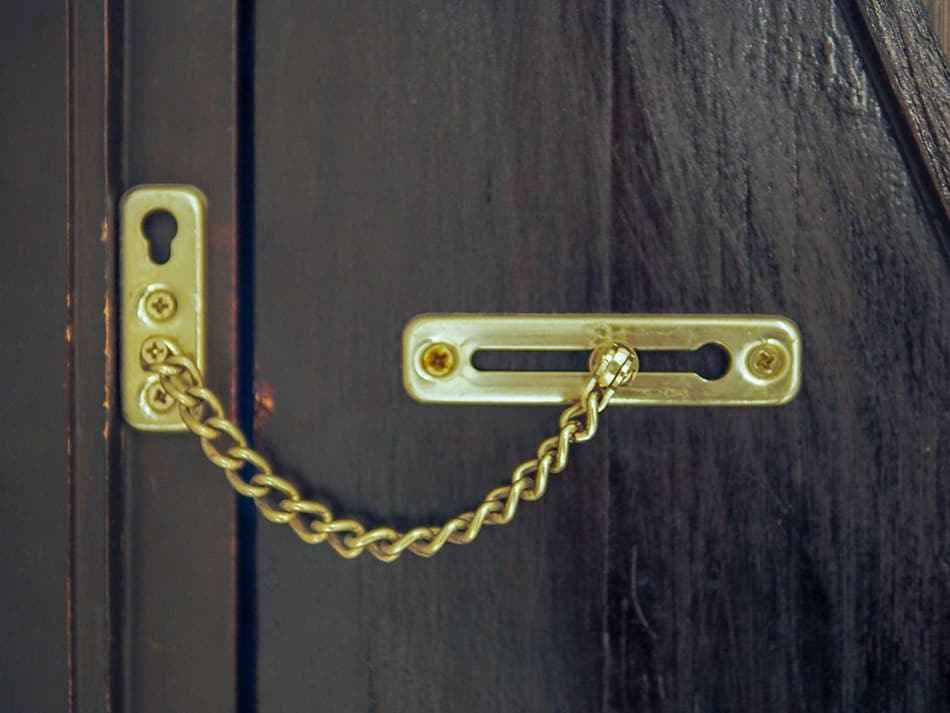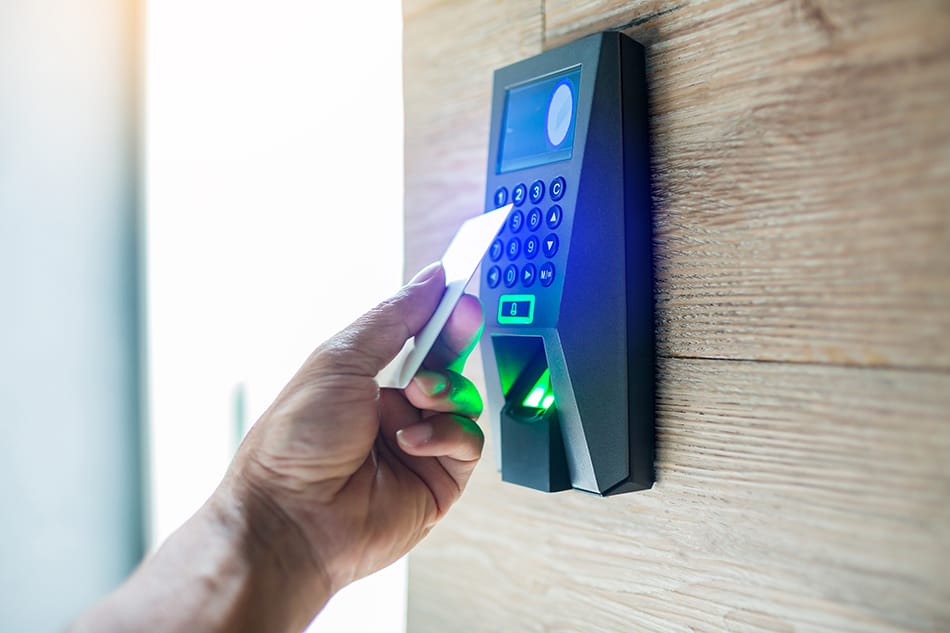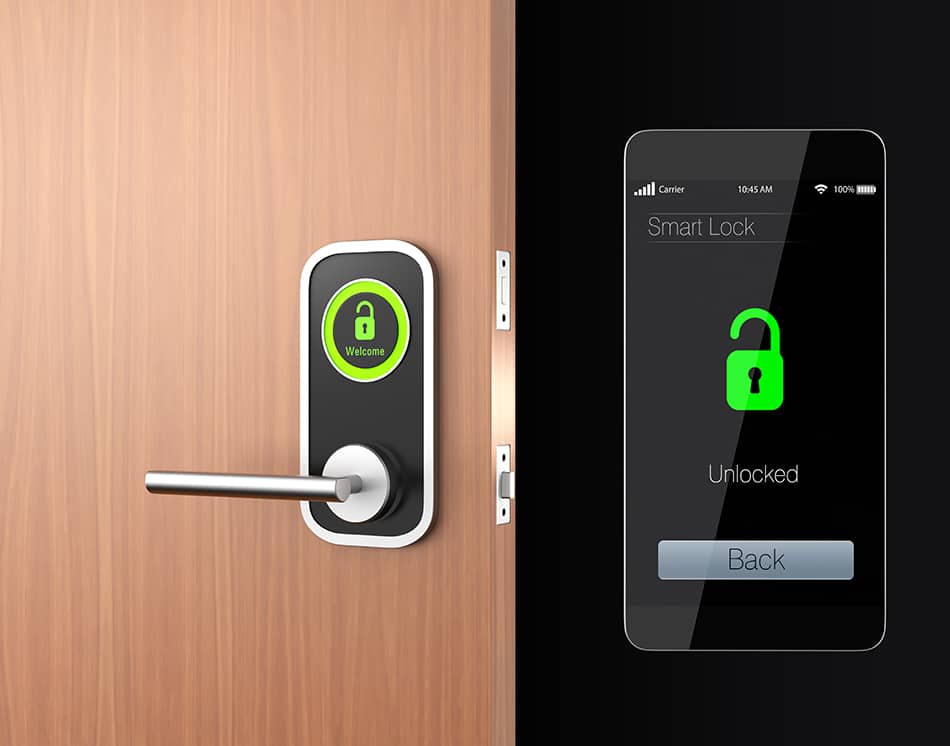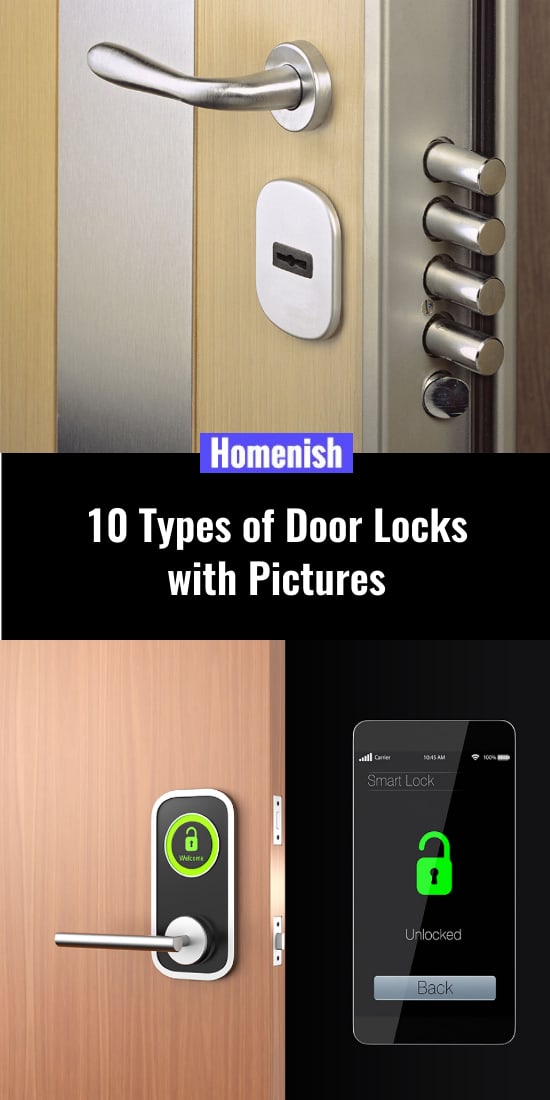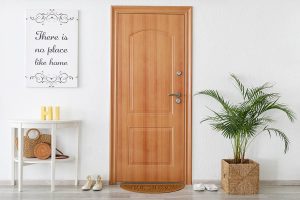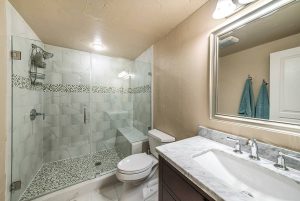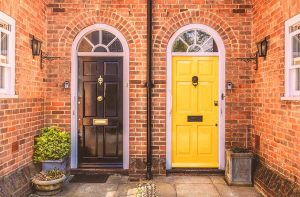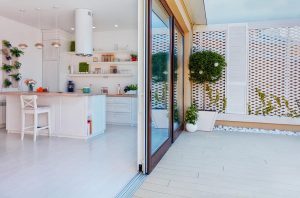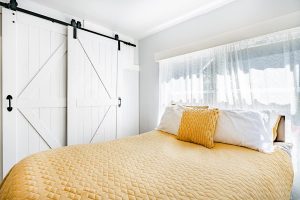If you need to buy or replace a door lock, you’ll probably want to ensure it is safe, easy to operate, and affordable.
Here we look at the various types of door locks and how they differ from each other to give you a clear understanding of which lock will be best for you.
10 Different Types of Door Locks
There are many instances where it is important for you to understand the differences between different types of door locks, how they operate, and which are most secure.
If you are moving into a new home, it would be wise to take note of which type of lock is used on both the front and back door of the property so that you can be sure you are safe in the building and that all of your belongings are secure.
You might also want to consider the different types of door locks available if you are having a new exterior door fitted and want to make sure you are getting the best value lock for your money.
Door locks are not just for exterior doors but are also very useful for internal doors, for example, on bathroom doors to ensure personal privacy or on office doors to prevent anyone else from accessing private documents. When choosing a new lock for your door you should not just consider security and intruder prevention but also fire safety, and accessibility.
This informative and easy-to-understand list covers the most commonly used types of door locks available across the world today, enabling you to make safe and informed decisions on the security of your property. By understanding how different types of locks work, you can be confident in choosing the best type of door lock for your specific situation.
1. Padlocks
Padlocks are easily recognizable portable locks that can be fixed to a door, gate, chain, or fence, to secure a space and prevent theft or vandalism. Padlocks are some of the oldest types of locks known to exist, with early examples of padlocks dating back to the era of the Roman Empire.
These locks are available in a range of styles and sizes, with some miniature padlocks being used to secure private journals, and larger more sturdy padlocks providing security for warehouses and industrial sites.
Some types of padlocks are very strong and difficult to compromise, but if anyone has some bolt cutters, then they would easily be able to break apart a standard padlock system. To counteract this, some padlocks are shrouded. This means they have an extended shape at the shoulders of the padlock to shroud the shackle and make it much more difficult for bolt cutters to access it.
When it comes to how a padlock operates, there are two main styles. These are combination padlocks and keyed padlocks.
1. 1. Combination
Combination padlocks have dials with a number of digits or letters that can be turned. Once these are lined up into the correct combination, the padlock will release, and the lock can be opened.
These locks are useful because they don’t require a physical key, so if you need a family member or friend to access your home, for example, to water your plants or feed your pets while you are away, then you won’t need to provide them with a spare key, and instead can just let them know the combination.
If you are concerned that your combination has been compromised, you can reset it to work with a different code. These locks are also useful if you are somebody who misplaces or forgets their keys, as you won’t need a key to be able to gain access to your property.
The drawback, however, is that combination padlocks can be easy to decode. They are also thought to be easier to break open compared to those which operate with keys.
Here is a good master combination lock you can get. The digits are placed on the bottom of the lock instead of the sides like other combination locks.
1.2. Keyed
Keyed padlocks work with a key that turns when inserted to release the lock. Some keyed padlocks can be key-retaining, which means the key cannot be released when the padlock is open.
You can also get rekeyable padlocks, which means you can change the key that operates it, for example, so that it matches the key that locks your garage, saving you from having numerous keys on your keychain.
This master lock is available to be purchased on Amazon.
2. Deadbolt Locks
Deadbolt locks are common on external doors because they offer a good degree of security against intruders. They operate via a key that is inserted into a cylinder, and the lock can only be released upon the key being turned. There are several different types of deadbolt locks. These include single cylinder, double cylinder, thumbturn, and vertical.
2.1. Single
Single cylinder deadbolt locks can only be locked from one side of the door, the external side. On the internal side of the door, the lock can be opened without a key, and just by the turning of the doorknob or thumbturn.
The problem with these locks is that if an intruder can access the property through an open window, then they can then easily open the door from the inside by turning the knob without needing a key, giving them an easy route out of the property to carry your belongings and look less suspicious than if they were climbing out of a window.
In spite of this, single cylinder deadbolt locks are the most common type of deadbolt locks used in homes in North America. This may be down to the fact that they offer safety against fires, as inhabitants in the home can easily escape by turning the knob without having to scramble for a key in the event of a fire or emergency.
2.2. Double
Double cylinder deadbolts have two cylinders and require a key to operate them on both the internal and external sides of the door. In terms of preventing theft, this is advantageous as intruders will not be able to unlock your door from the inside without a key.
However, the fact that a key is needed to unlock this type of lock means that it presents a distinct safety hazard. In the event of a fire or an emergency where inhabitants need to quickly get out of the home, they might find themselves trapped if they can’t access the key, or it may slow them down when they don’t have time to spare. Due to this, double cylinder deadbolts are banned in some areas.
If you opt for this door lock type, it is strongly advised that you keep a key attached to a hook close to the inside of the door for emergencies. Having a lock that can only be opened with a key from the inside may also prove to be inconvenient when opening the door to guests or the mail delivery person if you have left your key in another room or can’t remember where it is.
2.3. Lockable Thumbturn
A lockable thumbturn deadbolt is a sort of hybrid between a single cylinder and double cylinder deadbolt, as it can work as both. On the interior side of the door, this lock has a thumbturn, as well as a lock. This means that on a daily basis, you can ignore the lock, and just use the thumbturn for the sake of ease, and have the deadbolt operating just like a single cylinder lock.
However, you also have the option to use the interior lock, which will be useful if you leave your property for extended lengths of time, such as when on vacation, and be sure that your home is extra safe.
You can find this deadbolt with thumb turn on Amazon.
2.4. Vertical
This type of deadbolt is also known as a jimmy-proof deadbolt lock because it is designed in such a way that it cannot be pried, or ‘jimmied’ open. This type of lock is surface mounted, and so it is popular as an additional measure of security on external doors as it requires very few modifications to fit it.
These are resistant to being pried open because the deadbolt and the jamb bracket interlock.
3. Cylinder Locks
There are many different types of cylinder locks available, which cover a broad spectrum of uses. Cylinder locks are considered to be some of the most secure types of door locks you can get, though all are not equal, so be sure to check their security rating before you buy.
Cylinder locks are common as glass door locks for glass entryway doors and commercial doors. Some types of cylinder locks include rim cylinders, mortise cylinders, and European cylinders. Find many choices of cylinder locks here
3.1. Rim Locks
Rim locks appear to be very similar to mortice locks, but the door hardware they use is quite different. A rim lock is secured in place by a pair of screws on the inside of the lock that screw into the back of the cylinder.
These lock types are mounted on the door, on the internal side, and have a long piece of metal that extends out the back of the lock and runs through the door to the other side where it meets an opposite locking mechanism. Rim cylinder locks were common in the 20th century, but they are now rarely used as the primary means of security in a home. Where they are used, they are usually combined with a further lock for added safety.
3.2. Mortise Locks
Mortise locks, also called mortice locks in British English, differ from rim locks because they are installed within the door itself, rather than mounted on the surface of the door. Mortice hardware is mounted within the door, and the lock is then screwed into this.
You can identify a mortice lock easily, as it can be seen from the door edge. There are many different types of mortice cylinder locks, including three lever mortice locks and 5 lever mortice locks. The amount of levers in a mortise lock tells you at how many points the door locks into the frame. The more levers it has, the more secure it will be.
Get one excellent set of mortise lock below.
3.3. Euro Profile Cylinder
These types of locks are prevalent in the United Kingdom and other parts of Europe, especially in uPVC doors and composite doors. They are also used in North America, usually as sliding glass door locks, but also sometimes on internal double doors.
These locks are popular because they are easy to operate and provide a high level of safety. They come in various designs, including single cylinder or double cylinder. These locks are fixed in place by a screw that runs through the center of the cylinder. If they are not installed correctly, the single attachment point is at risk of snapping.
You can find this Euro profile half cylinder on Amazon.
4. Lever Handle Locks
These types of locks are commonly seen on internal doors in commercial settings. You might notice them on office doors, or hospital doors. These look similar to regular lever door handles but have the additional feature of a keyhole so that the door can be locked for privacy or security.
They are favorable to locking door handles with knobs, as they are easier to grasp, and simply require a gentle push down motion to operate.
These types of door locks are popular for handicap access and can be bought in either right or left facing options. Some lever handle locks can be forced open under pressure, but many manufacturers are countering this with a clutch mechanism, which prevents pressure from damaging the lock structure.
4.1. Knob Locks
Knob locks are spherical-shaped door knobs with the added feature of being able to lock. They are common in residential properties on bathroom doors and in many instances, are used on external doors as the primary means of security. This is especially common in apartment buildings or on the back door of homes.
Unfortunately, knob locks perform poorly against intruders or vandals and should never be used as the main security for the front or back door of your home.
All of the locking mechanism is inside the knob itself, so it can easily be compromised by bashing the knob with a hammer or wrench. If you already have these types of locks on your home, you should use them in conjunction with other locks for added security. Otherwise, the lock should be changed out for a higher-performing knob lock.
You can find this lever handle lock on Amazon.
5. Barrel Bolt
These simple locks are typically fixed to doors or gates as a means of additional security and should never be used as the primary security for your home. They are also commonly seen on bathroom doors, both in residential settings or public restrooms.
They are also known as sliding bolts, as they feature a single bolt attached to the door, which slides across to fit snugly into a catch that is screwed onto the doorframe. You can buy these in various sizes; the small ones are common for internal doors, whereas larger, more robust barrel bolts are usually reserved for external doors or gates.
Often people will fix two of these to a door, one at the top and one at the bottom, for extra peace of mind against intruders. Though these are not by any means impossible to bust up, they might make it considerably more difficult for an intruder to gain access to your home, which might be enough to make them give up and target a different house instead.
You can find this barrel bolt on Amazon.
6. Chain Locks
Chain locks are similar to barrel bolts. One part of the lock, the chain, is fixed to the door, while the catch is fitted to the door frame. To lock the door, simply slide the chain into the catch, but unlike a barrel bolt, you can still open the door when the chain lock is in place. These are designed to allow the user to open a door just a few inches and see who is outside without fully unlocking the door and allowing a stranger access to them or their home.
These entry door locks are common on hotel doors, but they are also popular among homeowners who might be wary of answering their front door, such as vulnerable people. Like barrel bolts, they should never be used as the primary means of security on an external door, but they are useful in giving a homeowner extra peace of mind.
This security chain locks are available to be purchased on Amazon.
7. Electronic Locks
Electronic locks usually operate via a digital screen where you can input a code or with the use of a keycard. These keyless locks are common in hotel rooms and offices and are becoming increasingly popular in apartment buildings and in residential properties.
The electric control is typically mounted right by the actual lock itself and has many advantages. Electronic locks can track how often they are used and even create a log to detail what time entry was gained to a room or property.
If different keycards are used by different people, it can also record which person has accessed the lock, which can be useful to find out which employees were accessing an office at what time, for example. This can help to maintain good security practices and also be useful if any suspicious activities occur.
Electronic locks are primarily operated by magnets or motors, which are controlled by an electric current. Most electric locks are run by batteries or at the very least, have a backup battery supply so that access to your home or office is not hindered in the event of a power outage. However, this is definitely something you should always investigate and consider before choosing an electronic lock.
8. Smart Locks
Smart locks are a new type of door lock which are rapidly gaining popularity and changing the way that people approach the security of their home. They allow the user to utilize their smartphone as a key to the lock, meaning they could access their lock from anywhere in the world.
You could select to set your smart lock so that it can be used when a code is inputted into your phone, or you may want to set it to operate with the use of your thumbprint. You may consider using both of these options and setting up a two-step verification system in order to further improve the security of your property.
These types of smart locks operate primarily by Bluetooth, so you can access the features of the lock so long as you are in Bluetooth range. In reality, this range isn’t very far, but it’s very useful in many ways if you are in your basement when an expected visitor arrives; you can simply unlock the door using your smartphone and welcome your friend into the house without having to trail up and back down the stairs.
Some smart locks have door hardware to use Wi-Fi to work, which gives you much greater access. In this case, you can operate your lock from anywhere in the world where you have a Wi-Fi signal. These types of locks are not usually ‘just’ a lock, but instead are a whole system of security features, often allowing you to connect via video to see who is at your front door, and allowing you audio options so that you can talk to them if you wish.
When somebody rings your doorbell, you will receive a notification on your smartphone. If you are not home, you could simply ignore it and watch the visitor, or if it’s a trusted mail delivery person, you might want to initiate an audio connection and instruct them of a safe place to leave your parcel.
The video functions could also allow you to keep an eye on who is accessing your property; for example, you could check if a pet sitter arrives at the correct agreed time, or keep tabs on what time your kids are returning home.
You can also unlock your door remotely using your smartphone and smart lock on a Wi-Fi connection. This might be handy if you have to unexpectedly leave town, and you want to allow a friend into your home to feed your cat or turn off your heating.
There are many advantages of a smart lock, which allow you ultimate control over who can come and go in your property. However, there are some disadvantages to consider. For those smart locks which run on a Wi-Fi connection, all functions will be lost if your Wi-Fi network drops out.
If you live in a remote location where Wi-Fi is not especially reliable, then a smart lock could prove to be quite frustrating and be more hassle than it’s worth. Smart locks that use Wi-Fi also run on batteries, and the Wi-Fi tends to drain them very quickly. This means that in order to keep them running, you’ll need to remember to frequently change and charge up the batteries.
When Do Door Locks Need Changing?
Most people don’t think about changing the locks on their doors periodically, but actually, this makes a lot of practical sense from a safety perspective. Now that you know all about the types of locks and which will be best for different areas of your home, you can find out how often you need to change your locks and in which scenarios door locks should definitely be changed or replaced.
When a resident moves out
Every time a resident of your property moves out you should change the locks. Commonly people will change their locks following the breakdown of a relationship, such as a divorce because they are conscious of the fact that they don’t want their ex having access to their home. However, you should also change your door locks when a roommate moves out to prevent the keys to your home from falling into the wrong hands.
When you move into a new home
When you move into a new home, the previous owners should pass on all of their keys to you. However, you can never guarantee that all of their old keys are now in your possession, and it’s impossible to know if there are people out there with keys to your home. Any time you move into a new property you should have the locks changed so that you can be sure nobody else can access your home without your permission.
When you lose your keys
If you ever lose your keys then you need to change the locks on the exterior of your home. You should also consider having the lock altered on your car, if your car keys were also on your keychain. Changing the locks will ensure that your lost keys will be useless in the event that they find their way into the hands of untrustworthy people.
If you are suspicious about the circumstances of losing your keys, then you should change your locks immediately. It could be that your keys were actually stolen, and somebody is actively trying to gain access to your home.
When you’ve had a break-in
You should always replace all of your door locks after a break-in, and you should also consider changing the window locks as well. An intruder could have taken your spare key while they were in your home, in which case they will easily be able to gain access to the property again in the future. If the intruder accessed the home via the lock, then this is proof that your lock is not sufficient and needs to be upgraded.
When several years have passed
Many people will live in a home for decades without replacing their locks or upgrading them, but this is poor practice from a safety perspective. Locksmiths recommend that locks be updated every 7 years. This is because the functional integrity of locks can degrade over time, making them more susceptible to being broken by potential intruders or making them more likely to get jammed while you are using them.
Updating your door locks every seven years will ensure that your locks are always in good condition, thereby protecting you from home invasions or the inconvenience of the door lock breaking during use.
